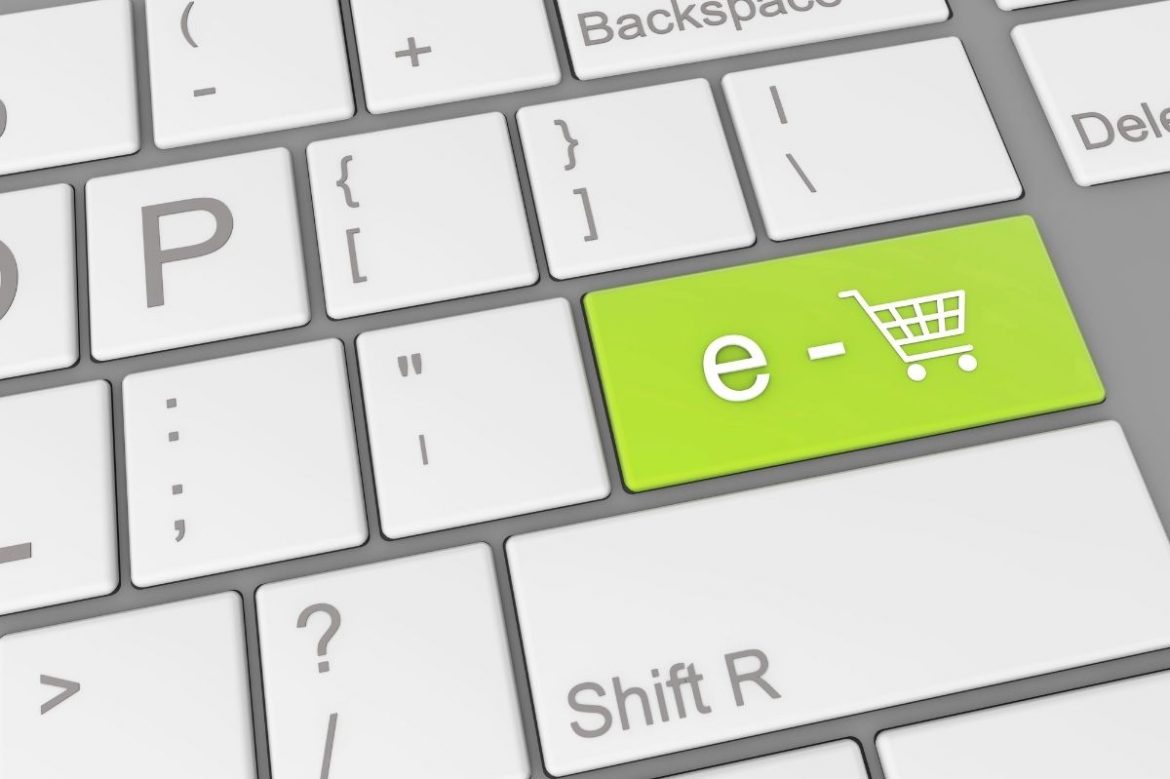Table of Contents
What Is E-Commerce In The First Place?
E-commerce, also known as “electronic commerce” in Japan, is roughly a transaction that takes place on the Internet. If a company sells goods online, it’s e-commerce. Amazon, for example, can be counted as one of the most well-known sites in the e-commerce industry.
In this article, we’ll cover a wide range of e-commerce history, related stats, platforms, and more.
History Of E-Commerce
The prototype of e-commerce was first born in 1979. It all started when Michael Aldrich connected his TV to his computer with a telephone line. It was a lot different from what we know about e-commerce today, but his experiments inspired the idea of being able to shop without having to go to the actual store.
At that time, few people had a computer yet. Bill Gates and Steve Jobs tried to make computers “personal”. Gates said his goal was to realize his vision of “one computer per family, one desk.” If the personal computer had not been born, e-commerce would have been completely different from what it is today.
1994 is the year Jeff Bezos launched Amazon. 100 began to sell ten thousand or more books online. As a result, Amazon has become the most popular e-commerce store for buying anything, not just books.
With the rapid spread of personal computers in the mid- 90s and early 2000s, e-commerce is ready to make a leap forward. How the online payment was not finished 90 until the middle of age, although the company had received a check from a customer, 1998 of year 12 to May PayPal appeared, dramatically online payment using a credit card. It’s simple.
By 2008, 3.4% of the industry’s overall sales will come from e-commerce, and that growth can be seen. 2014 to the year 2014, 1,200 million to 2,400 thousands of online stores have been estimated to have been present in the world.
E-commerce Statistics
- By 2023, global e-commerce sales are projected to reach over 700 trillion yen. E-commerce is a growing and profitable industry.
- Due to the outbreak of the new coronavirus infection in 2020, the EC conversion rate in the United States has increased to more than 20%.
- In the United States, 2021 people shop online until the year 53.9% of the total to have been estimated to be.
- By 2021, more than 2.1 billion shoppers worldwide are projected to buy goods and services online.
- Women shop online more often than men. Converted per $ 10 used online, women are spending $ 6 and men spending $ 4.
- Millennials between the ages of 18 and 34 spend $ 2,000 a year on online shopping, making them the most consumed online compared to other generations.
E-commerce Business Model
B2B: B2B is ” business to business by the”, refers to the transaction between the companies. Alibaba is a typical B2B model, where suppliers sell products to other companies. Alibaba is so cheap because it is wholesale so that the buying company can make a profit in retail.
B2C: B2C is ” business to consumer stands for”. This includes businesses that companies sell to the general public. If you start an online shop, it’s likely to be for consumers, not for businesses. Amazon , Rakuten , Apple, etc. apply to B2C
C2C: C2C is ” consumer to consumer “, which refers to the transaction of the consumer with each other. Examples of C2C are Mercari and Yahoo! Auctions! , eBay, etc. Most of the people who sell on these sites are not professionals, but ordinary consumers who sell second-hand or new products.
C2B: C2B is ” consumer to business is that of”. Here, ordinary individuals sell products and services to companies and organizations. For example, a photographer might sell his work to a company.
Common Types Of E-Commerce
Sites that sell physical products: Retailers with physical stores make widespread online sales, which falls into this category. This is the best option when you want to increase sales without increasing the number of physical stores.
service-based site: freelancers and online service providers, in order to build a point of contact with prospective customers WEB, is possible to take advantage of the site has in recent years become a major trend.
Sites that sell digital products: Digital products such as software and video games do not need to be sold in stores because the transaction is completed once the consumer downloads them. This type of e-commerce has great growth potential because cost savings increase profitability.
Dropshipping site: This type is closer to sites that sell physical goods, and a little different, they are while the sale online does not hold the stock. Partner with a supplier of the products you sell to make them available to users online. When a purchase occurs, the supplier will ship the item for you.
What Is An E-Commerce Platform?
An e-commerce platform is a software solution developed to allow businesses to build stores online. Here, companies can leverage mechanisms such as delivery services to sell their products and services to customers around the world. Examples of this e-commerce platform include Shopify, BigCommerce, and Magento.
Shopify was founded in 2004 by Tobias Lütke, Daniel Weinand, and Scott Lake. By 2021, more than 100 million business owners will be using Shopify, with total sales of over 21 trillion yen. The Shopify platform allows you to download and take advantage of a variety of apps.
Famous E-Commerce Site
Amazon: Jeff Bezos launched is, Alexa at the moment the world According to the 11th has been a famous site in.Amazon. Com
Taobao: by Jack Ma Taobao is, 8 in the world ranking has become a place.
Tmall: This is also a site established by Jack Ma. It has grown to 3rd place in the world ranking.
AliExpress: AliExpress, launched by Jack Ma, is still ranked 41st in the world.
EBay: Pierre Omidyar by the establishment of eBay is, Alexa has become a 39 in the world according to.
Rakuten: In 1997, Rakuten launched a company where Hiroshi Mikitani made progress. It is one of the most famous e-commerce sites in Japan.
The Secret To Successful E-Commerce
Customers do not come and buy as long as they build an online shop and prepare products. Running e-commerce is not that easy. Let’s see what you need to be careful about to succeed.
User-centric: As long as you do business online, you’re basically free to sell what to whom. However, it is trusted to the user WEB you will need the site to understand what things to. Design themes, branding, copy tones & etiquette, etc. must be optimized. And try to be a site for one or two specific people so you don’t get too broad and confused.
Test with a friend: Ask your friend to be on a test bench. Have them actually experience purchasing at the store and check in advance if the purchasing process is too complicated to cause withdrawal.
Optimize for mobile: It should be equally easy to use and buy on mobile and desktop. As the number of mobile users continues to grow in every industry, it is necessary to keep up with this trend in order to succeed in e-commerce.
SEO and PPC to invest in SEO and PPC (pay-per-click advertising) is because the increased traffic to your store will be indispensable tactics for success. It doesn’t matter if you have a small budget, so find a consulting firm or agency, spend your budget on it, and see how it affects your sales.
Strive for R & D: Always research new products and marketing methods without being satisfied with the status quo. There is no need to change the contents of the online shop every month. Instead, try to get attention and grow your store in innovative ways.
What Is E-Commerce Marketing?
E-commerce marketing is a process that supports sales growth, primarily through online platforms. Includes brand awareness campaigns, display ads, discount QR codes, and more. Most e-commerce marketing tactics are an online application of traditional marketing industry strategies.
Google Ads, social media, and major platforms dominate online advertising today. Media such as flyers and brochures, E has been replaced by e-mail marketing. Other examples of e-commerce marketing include affiliate marketing, social media marketing, video marketing, influencer marketing, and more.
The Future Of E-Commerce
The EC industry will continue to grow. In the wake of the past few years, e-commerce is expected to continue to take away the share of the physical store economy over time. This is good news for anyone who wants to start an online shop. However, while total online sales continue to rise, from a different perspective, it is also true that competition in this area will intensify.
E-commerce will continue to evolve, creating new shopping experiences with VR (Virtual Reality) and AR (Augmented Reality). For apparel stores, the virtual try-on feature allows users to pre-check how their clothes fit and look. You will also be able to experience making up through the camera of mobile devices such as smartphones.
Also Read : Innovative Marketing Strategy For Bar Operations




